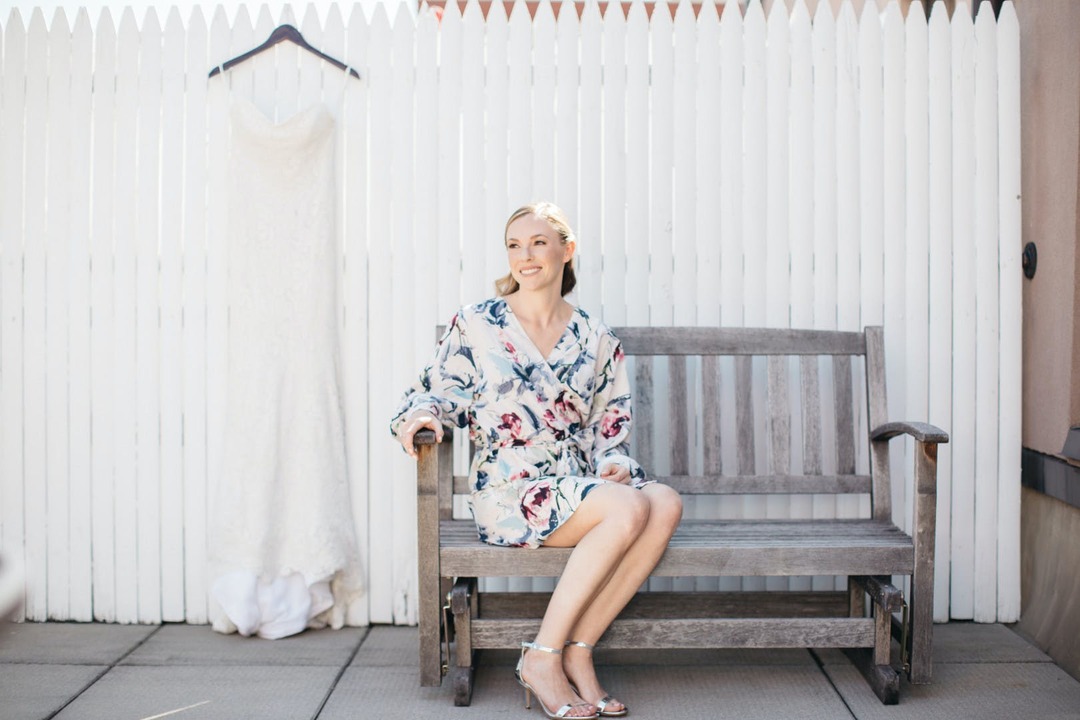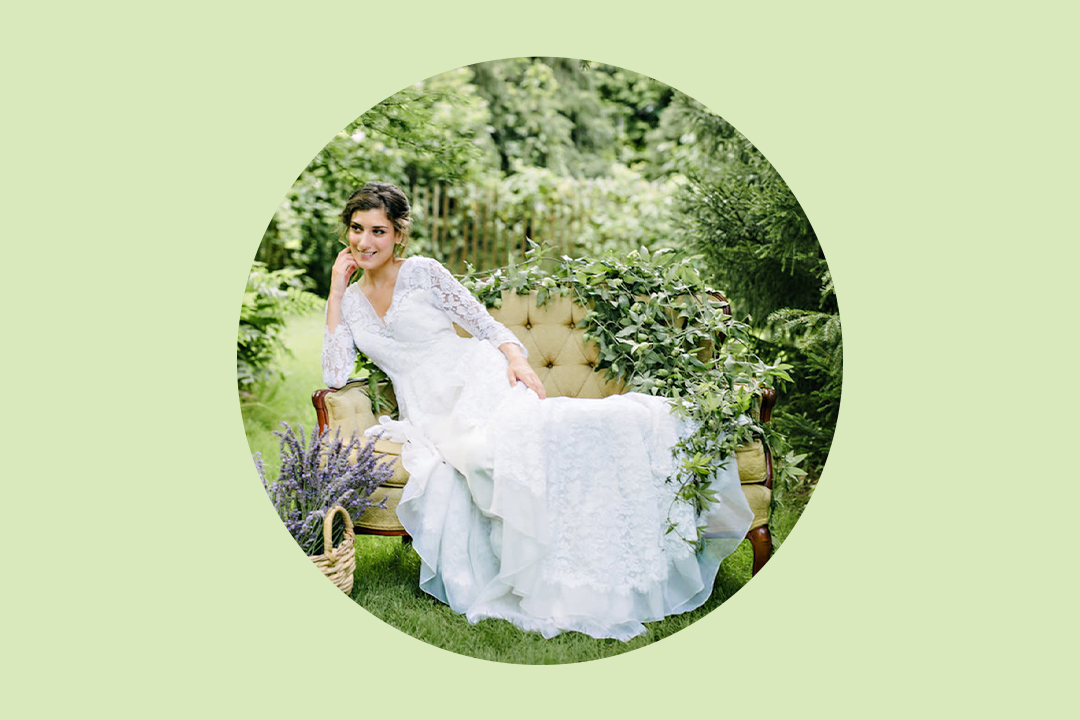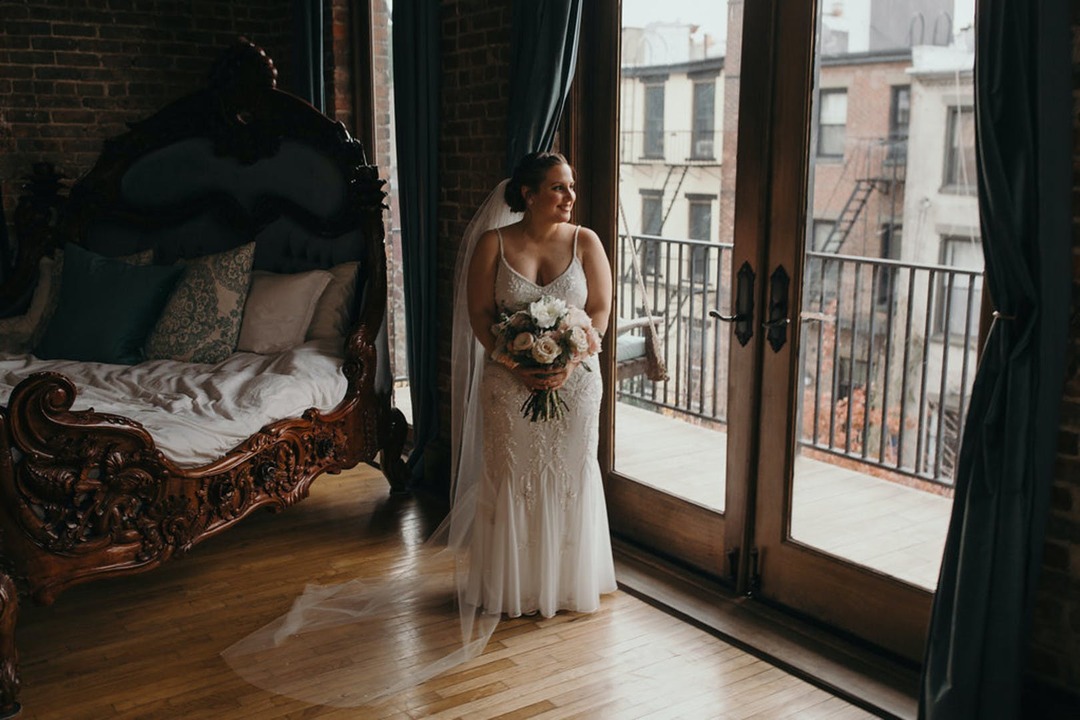- Expert advice/
- Fashion & beauty/
- Wedding dresses/
- Your Guide to A-Line Wedding Dresses
- Wedding dresses
Your Guide to A-Line Wedding Dresses
Learn everything you need to know about A-line wedding dresses and the details that make each one unique.
Last updated February 5, 2024

Like finding true love, when you find the perfect dress for your wedding day, you just know. However, you may need direction in narrowing down all of the options, of which there is an endless array. One way to get started is by choosing the dress shape.
There are full-skirted ball gowns, sleek column sheaths, and everything in between. Then, there’s the classic A-line wedding dress silhouette that never goes out of style. A-line wedding dresses are defined as being fitted at the waist and hips and gradually flaring out in the formation of an A for the skirt.
The beauty of A-line wedding dresses is that they favor everyone, and there are multiple variations of the cut. Your preferred fabric, color, and embellishments, as well as the season of when your wedding will be held all help to determine your specific wedding dress style. An A-line shape creates a slimming silhouette, a well-defined waist, and an effortless look for any bride, which is why it’s remained one of the most popular wedding dress trends to date.
Starting with a wedding dress staple makes it easier to add on elements that will elevate your choice and make it feel completely your own. A-line wedding dresses may be common, but the ways in which you can customize them makes each look extra special.

Start With an A-Line Shape
A-line wedding dresses have a shape that works well for all wedding dress lengths. Whether you’re envisioning a princess-style ball gown that reaches the floor, or a retro chic tea-length dress that hits right at your calves, the A-frame provides a prime shape for any added details that’ll make up your dream dress.
Other silhouettes include trumpet and column wedding dress styles. Trumpet wedding dresses emphasize curves, and column wedding dresses embrace a minimal effect, but the A-line cut offers an in-between option of both. It’s fitted, it flares to follow a natural shape, and it appears just as beautiful when kept simple as it does heavily accessorized.
Once you’ve determined the A-line silhouette that will work best for you, you can build upon your wedding day look by getting inspiration from variations of straps, sleeves, and necklines.
Types of Straps
The type of straps will change the appearance of a dress even if they all start with the same A-frame. Do you lean toward spaghetti straps, thicker, banded straps, or no straps at all? Other options are the one-shoulder strap, or opting for sleeves and scrapping straps altogether, which opens up a whole other realm of possibilities. It comes down to how much coverage and support you’d like for the top of your dress, and how straps fit your overall vision.
Sleeves vs. Sleeveless
Feminine, rustic chic wedding gowns often have flutter or capped sleeves, or full-length lace variations. Other A-line wedding dresses include half sleeves, off-the-shoulder sleeves, or no sleeves at all. Who knew that there were so many ways to alter the style of a standard A-frame? When deciding on sleeves or no sleeves, think about if you want to highlight your arms or minimize them instead.
Comparing Necklines
The details don’t stop with only the straps and sleeves, as the neckline changes the look, too. A sweetheart neckline effortlessly pairs with an A-line silhouette, whereas, a straight across neckline is more conservative, and a plunging neckline is on the more unconventional side. The good news is that no matter the preferred neckline, it will complement this standard wedding dress silhouette.
Choose Feel-Good Fabrics
Fabrics are another factor to keep in mind when customizing your wedding dress style. Based on your wedding destination and time of year, decide what type of fabric will feel best against your skin. Lighter fabrics, such as cotton and satin, are better suited for spring and summer weddings or destination weddings where the weather is warm. Alternatively, heavier, luxe fabrics, such as velvet or thick layers of tulle, are a go-to option for winter weddings and colder climates.
Satin and silk are versatile fabrics. They drape along the natural flow of the body and exude elegance when worn as part of a formal ceremony look. Other lightweight fabrics include lace and chiffon, both of which emulate a whimsical aesthetic for a rustic, chic ceremony. While beautiful, these delicate fabrics easily snag, which makes them a better match for A-line wedding dresses of shorter lengths.
There’s less worry about shoes getting caught in a floor-length hemline, or jewelry accidentally catching the top of a bodice. On the other hand, thicker fabrics or designs with multiple layers often make up non-traditional wedding dress styles and provide a way to create a wedding wardrobe that will keep you warm, if you’re planning to get married outdoors when the weather is cooler.
After deciding which type of fabric you prefer, the next decision is how traditional or modern you’d like to go in terms of color. Bridal white is the standard choice, but modern brides are going off script and embracing various shades such as cream, peach, and pale pink—or opting for the entirely opposite end of the spectrum and choosing colors such as marigold, burgundy, and even black as their wedding dress color of choice.
Go Classic or Modern With Color
By sticking with a standard model, A-line wedding dresses can be customized based on color. A classic choice is a stunning white gown with a strapless, sweetheart neckline and a skirt that sweeps the floor. However, all colors can be considered, based on the bride’s personality and fashion preferences. Brides who want to reinterpret white with another light shade may like the idea of a warmer tone such as ivory or a soft, pastel color.
Modern brides with a specific aesthetic in mind may want to reinvent the traditional wedding gown altogether and go for a statement primary color such as red or blue. Black is also en vogue, when historically it's been a color that’s been avoided during wedding ceremonies. Fortunately, there are no rules when it comes to what you wear for your wedding day. It’s about what makes you feel the most comfortable and confident.
If you’ve always dreamed of the fairylike, ethereal feel of a white bridal gown, there are several designs to choose from that will still make your look feel customized. If you want to go unconventional and choose an unexpected color, while still sticking with the standard A-line frame, that’s a beautiful option, too.
Add Embellishments to Personalize
Embellishments make a wedding dress pop. Lace overlays, sparkly waistbands, and crystal beading are a few ways to personalize A-line wedding dresses. For minimalistic sophistication, stick with soft, flowing fabrics and incorporate embellishments by adding a lace veil or sparkly stilettos. Sometimes, it’s the one standout accessory that completes a look.
Embellishments are also a way to incorporate personal touches, such as a ribbon as your “something blue,” a vintage heirloom pinned to the top of the gown, or an added piece, such as a faux fur stole, floral crown, or vintage headpiece. When your selection starts with the go-to A-line wedding dress structure, there are numerous ways to personalize it to match your unique style.

Consider the Season as You Make Your Final Selection
After you’ve gone through the basics of choosing the fabric, color, and embellishments that will adorn your gorgeous dress, another consideration is the season. Fashion for spring weddings differs from those held in the fall. This is also true for beach weddings compared to black-tie affairs. Choosing your dream wedding dress is one of the most important decisions, but selecting the venue is likely the first.
Visiting venues will secure your wedding date and set the tone for all the details that follow. For example, if your destination is somewhere tropical, then a velvet, full-skirted wedding dress doesn’t quite match the aesthetic. The location and season guide what you’ll wear to keep you comfortable, coordinate with the backdrop, and stick with the mood that you want to create.
Sourcing A-Line Wedding Dress Inspiration
Flipping through bridal magazines and researching bridal outfits online is part of the excitement of being engaged. When starting your search for dress styles, knowing the structure you want helps to narrow down your choices. Since the A-line wedding dress style is one of the most popular among brides-to-be, you’ll want to filter your selection by fabric, color, and dress adornments.
When the day comes to try on dresses in person, bring a trusted friend or family member to help take pictures, zip up the backs, and talk through options with you. The feel of a dress may work, but the way it photographs may not and vice-versa. Keep your makeup and jewelry minimal so as not to distract from the actual look of the gown, and keep an open mind when shopping for your perfect dress.
Your dream dress may include a style that you never thought you’d like before. Part of the fun is trying on various options and seeing which dresses flatter you the most. Brides who know what they want will hone in on their dress in no time and make shopping a cinch. For those who want to take time visiting different places, the sheer number of gorgeous dress styles may become overwhelming.
Remember, simply start with a quintessential choice such as the A-line silhouette. From there, you can try on as many styles as you can handle until you find the one.
Up next for you

Simple Wedding Dresses That Are Elegant and Timeless
Inspiration
Want your wedding dress to stand the test of time? You can't go wrong with a simple gown. Check out Zola's guide to beautiful, simple wedding dresses.

Best Wedding Dresses for Tall Brides
Inspiration
Find out which silhouettes work best for wedding dresses for tall brides, and get a few styling tips as you prepare for your big day.

What’s Your Wedding Dress Style?
Inspiration
Finding the perfect wedding dress can sometimes feel as challenging as finding your soul mate. Luckily we’re here with a quick-and-easy quiz to help you figure out your ideal wedding style.

Best Wedding Dress Styles for Plus-Size Women
Inspiration
In search of the best wedding style for plus-size women? We have you covered with our comprehensive guide, filled with plenty of wedding dress tips and tricks.
- Expert advice/
- Fashion & beauty/
- Wedding dresses/
- Your Guide to A-Line Wedding Dresses
Find even more wedding ideas, inspo, tips, and tricks
We’ve got wedding planning advice on everything from save the dates to wedding cakes.
